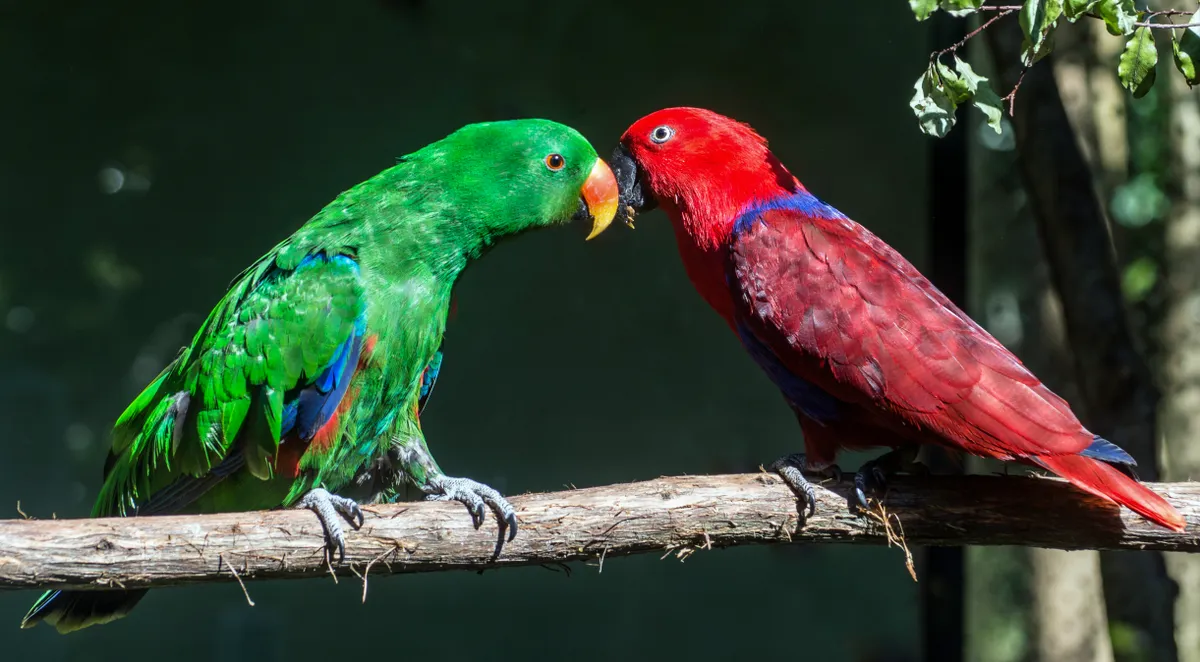Few birds have puzzled scientists more than the eclectus parrot (Ecelctus roratus). The legendary evolutionary biologist Bill Hamilton used to show a slide of two eclectus parrots in his lectures: one crimson with a cobalt bib, the other green.
They were male and female, but not as you’d expect. In most sexually dimorphic birds the male is the colourful character – ornamentation being an indicator of his fitness – and the female drab. But with the eclectus parrot, the female is the scarlet show pony and the male more camouflaged. Hamilton would finish his talks proclaiming that once he understood why the birds were red and green, he’d be “ready to die”.
Eclectus males and females are so different they were originally classed as separate species. It was almost a century after the first male was captured in 1776 before both red and green parrots were classed together. It wasn’t until the 21st century, after Hamilton had sadly passed away, that the mystery of their peculiar coloration was solved by the Australian biologist Robert Heinsohn.
The only way a female avoids starvation is by being fed by males hoping to mate with her. Females might have up to five males in attendance, feeding chicks that aren’t even theirs.
Heinsohn began studying these shy parrots in the remote northern rainforests of the Cape York Peninsular, Australia. This took some serious climbing skills as the parrots only nest in tree hollows 20-30m up.
Females do all the brooding and rarely leave the hollow, even after the chicks have fledged. This is highly unusual, but a good hollow is hard to find. The right species of nest tree is rare – just one per square kilometre – and cavities prone to flooding, which can drown the chicks.
So females in possession of lofty, dry hollows will guard their prime real estate with their life. Contests are frequent and can be fatal. Females are forced to stay put and defend their coveted hollows for 11 months of the year.

The only way a female avoids starvation is by being fed by males hoping to mate with her. Females might have up to five males in attendance, feeding chicks that aren’t even theirs. So, males spread their bets by servicing several females, giving the eclectus a curious polygynandrous mating system very different to most monogamous parrots.
Read more articles by Lucy Cooke:
Herein lies the answer to the plumage mystery. Females use their bright colours to advertise their fitness and compete with other females by clearly displaying their hollow is occupied. Males, on the other hand, spend several hours a day foraging for fruit to feed the females and their young. Their green livery blends with the leafy surroundings protecting them from predatory peregrine falcons. But females also want to choose the fittest male to fertilise their egg. Using a spectrometer, Heinsohn discovered the males’ feathers aren’t just green but glow ultraviolet. The eclectus females can see this, but their predators can’t, allowing them to choose a discreetly brilliant mate.
Main image: illustration of a female eclectus parrot by Holly Exley.